Artificial intelligence has revolutionized marketing, offering tools that enhance efficiency, precision, and scalability. From chatbots to predictive analytics, AI has unlocked new ways to engage audiences and optimize campaigns. However, as brands embrace automation, there is a pressing challenge: maintaining an authentic, human connection. How can marketers strike the right balance?
The Power of AI in Marketing
AI streamlines complex processes like data analysis, content creation, and personalization. Tools powered by AI can segment audiences, recommend tailored content, and predict consumer behavior—saving marketers time and boosting ROI. Chatbots enable instant communication, while AI-driven ad platforms ensure campaigns reach the right audience at the right time.
Moreover, AI enables real-time decision-making. Marketers can adjust campaigns based on live analytics, ensuring that messaging remains relevant. For instance, AI can identify trending topics on social media, allowing brands to join conversations and stay culturally relevant. Beyond efficiency, AI also enhances creativity through tools that generate content ideas or even design assets.
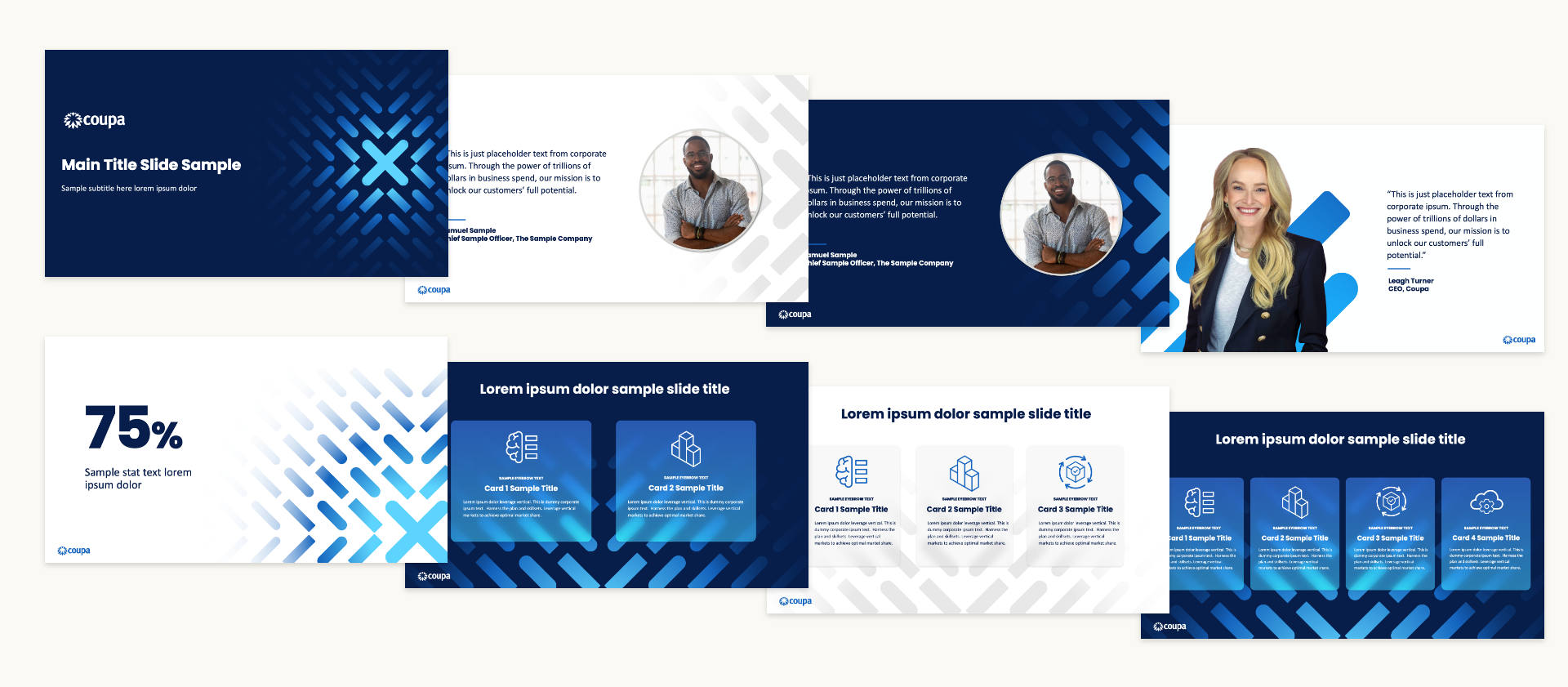
The Risk of Losing Authenticity
While AI enhances efficiency, it can risk alienating audiences if overused or misapplied. Consumers value human touchpoints, especially in industries that rely on trust, like healthcare or financial services. Over-reliance on AI can make interactions feel impersonal, leading to disengagement.
Additionally, there’s a growing concern about the ethical use of AI. Missteps in personalization, such as overly invasive data tracking, can erode trust. Similarly, relying too heavily on automated responses can create frustration when customers encounter complex issues that require empathy and nuanced problem-solving. Striking a balance between automation and authenticity requires intentionality and foresight.
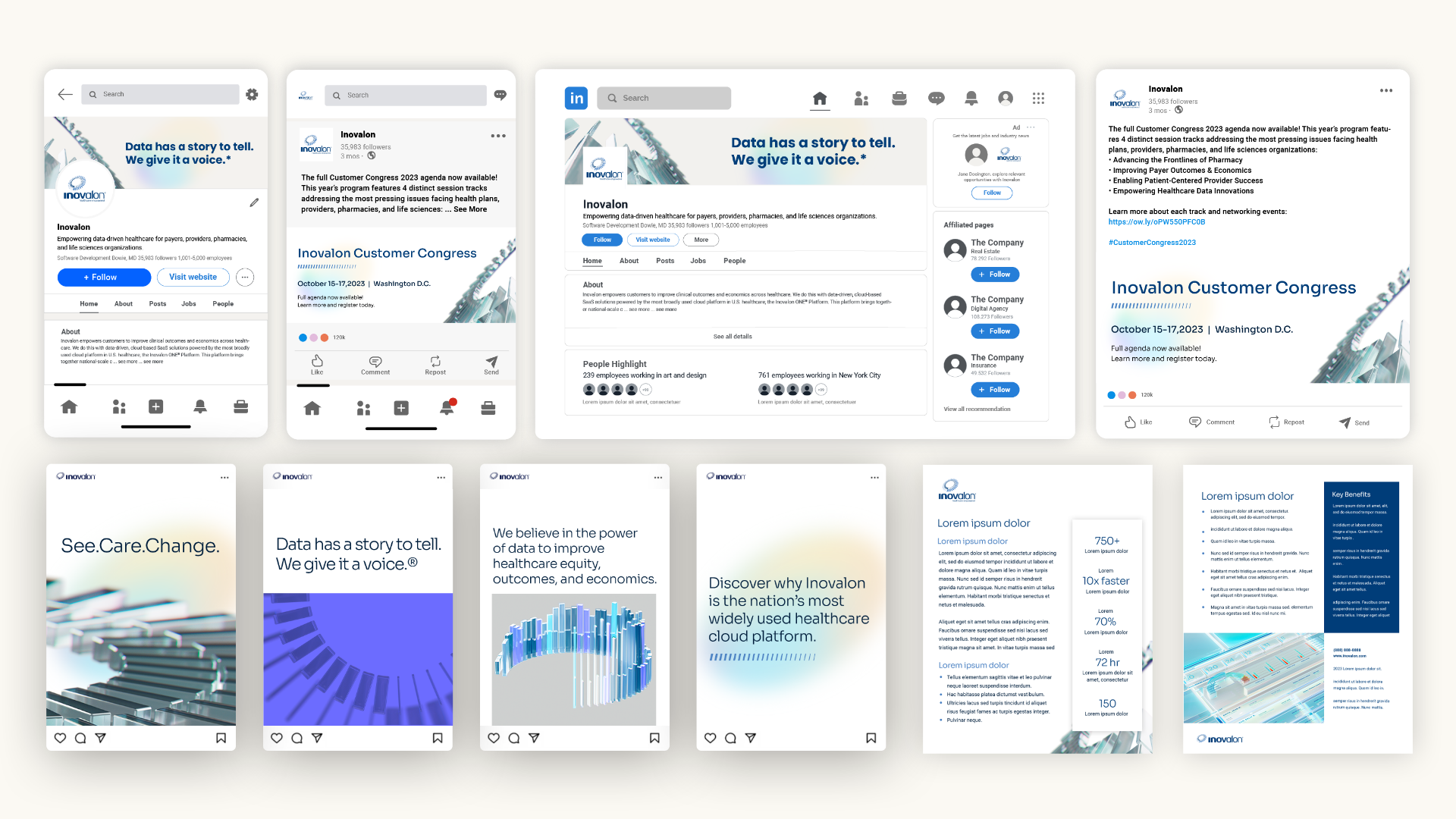
Striking the Balance
- Human-AI Collaboration: Use AI for data analysis but let humans craft messages that resonate emotionally. For instance, AI can analyze customer sentiment, but human marketers should interpret that data to create meaningful campaigns.
- Transparent Communication: Disclose when AI is in use, such as chatbots, to build trust. Transparency fosters a sense of honesty, helping audiences feel respected and valued.
- Periodic Oversight: Regularly review AI-driven campaigns to ensure they align with brand values and audience expectations. Conduct audits to identify areas where human intervention might enhance effectiveness.
Leveraging AI Responsibly
Brands should view AI as a tool to enhance, not replace, human creativity and connection. By establishing clear boundaries—such as reserving certain touchpoints for human interaction—marketers can maintain authenticity. Training employees to work alongside AI systems can also create a more cohesive strategy where technology and humanity complement one another.
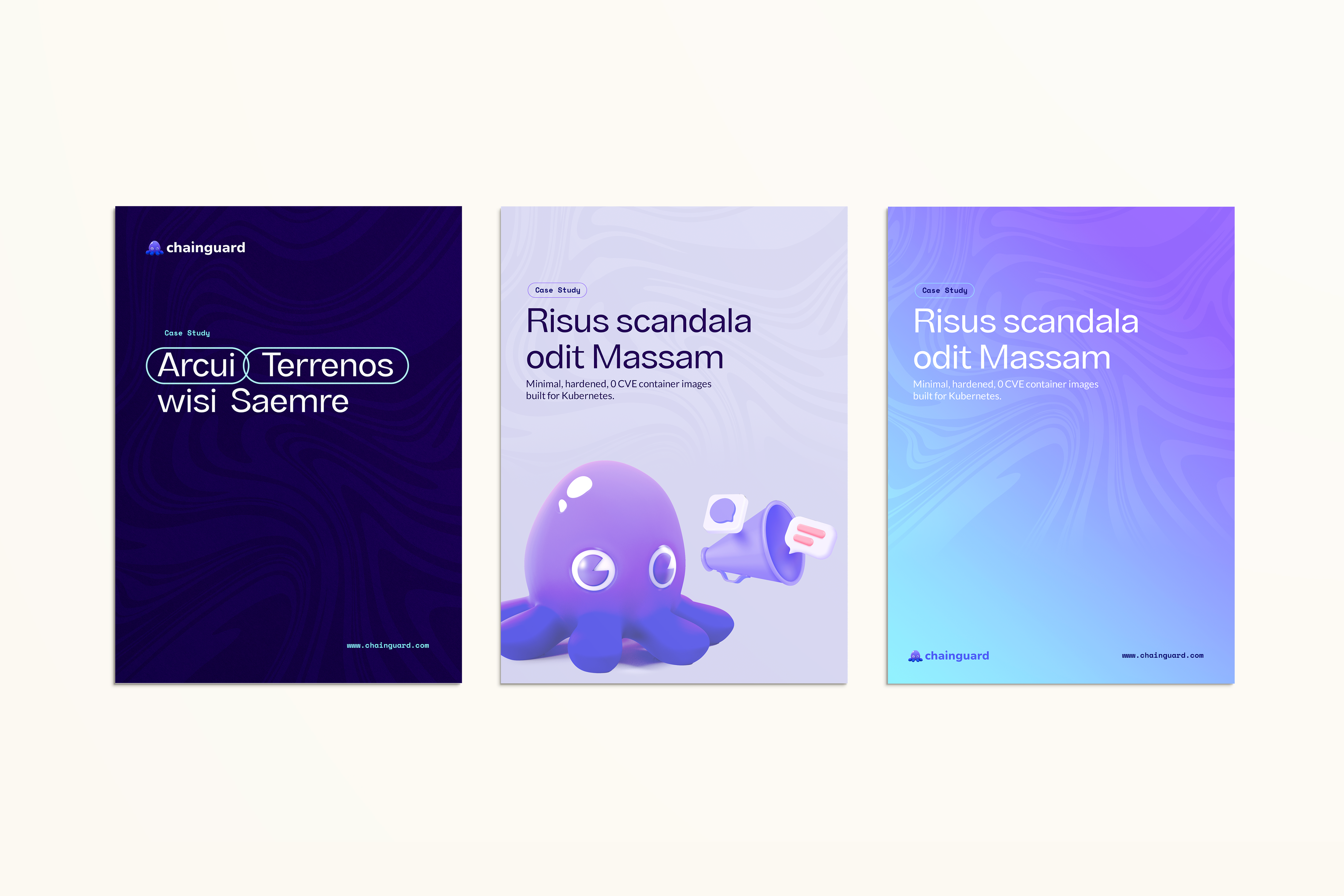
A Future of Synergy
By blending AI efficiency with human creativity, brands can achieve authentic connections that resonate deeply with audiences. Striking this balance isn’t just a best practice—it’s essential for long-term marketing success. As AI continues to evolve, the brands that succeed will be those that use it to enhance—rather than replace—the human touch. Contact Bluetext today to explore how we can help you navigate AI-driven marketing strategies that balance innovation with authenticity.
As the marketing landscape continues to evolve at a breakneck pace, businesses must look ahead to stay competitive in the years to come. By 2025, the strategies that once worked will need to be adapted to meet new expectations and leverage emerging technologies. From AI-driven personalization to sustainability in brand messaging, the future of marketing will be shaped by innovation, agility, and a deep understanding of consumer preferences.
In this blog, we’ll explore the key trends that will drive marketing success in 2025 and provide actionable steps businesses can take today to future-proof their marketing efforts.
The Power of AI-Driven Personalization
Artificial intelligence (AI) is transforming marketing by enabling hyper-personalized customer experiences at scale. AI tools can analyze vast amounts of customer data, allowing brands to predict behavior, deliver tailored content, and create highly relevant recommendations. This level of personalization not only enhances customer satisfaction but also fosters brand loyalty.
For instance, companies like Netflix and Amazon have mastered the art of AI-driven personalization, delivering content and product recommendations based on user preferences and behavior. As we approach 2025, consumers will expect this kind of personalized experience from every brand they interact with.
Actionable Step: Invest in AI-powered marketing tools that allow you to gather and analyze customer data effectively. Start by integrating AI into your email marketing, content delivery, and e-commerce platforms to offer personalized recommendations and improve engagement.
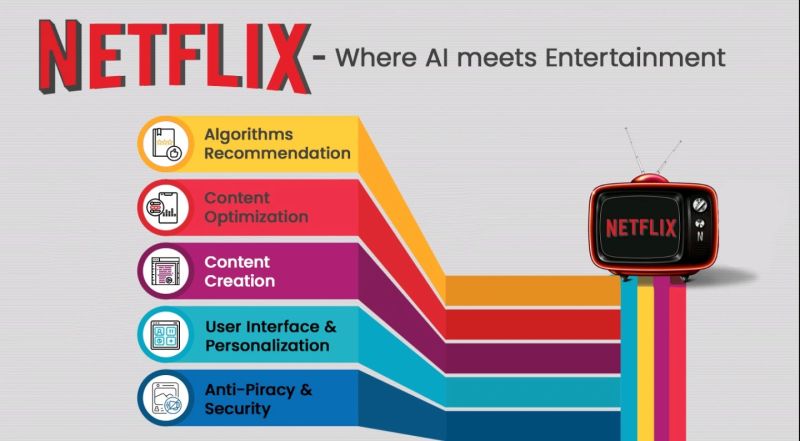
Omnichannel Customer Experiences
In 2025, the line between online and offline experiences will blur even further, with customers expecting seamless interactions across multiple touchpoints. An omnichannel marketing strategy ensures that no matter where your audience engages with your brand—whether it’s through social media, email, in-store, or mobile apps—the experience feels unified and consistent.
Leading brands are already embracing omnichannel strategies to create frictionless experiences. For example, Starbucks’ mobile app integrates with in-store interactions, allowing customers to order ahead, earn rewards, and pay seamlessly. This kind of cohesive approach will be crucial to staying competitive.
Actionable Step: Begin mapping out your customer journey to identify where your audience engages with your brand. Develop a strategy that ensures a consistent brand message and customer experience across all platforms and devices.
Embracing Sustainability in Brand Messaging
As consumers become more socially conscious, sustainability is no longer a nice-to-have but a necessity for brands looking to build trust and loyalty. By 2025, sustainability will be a key driver of purchase decisions, with customers seeking out brands that align with their values, particularly regarding environmental and ethical concerns.
Brands like Patagonia and Allbirds have built their entire ethos around sustainability, and their transparent, eco-friendly practices resonate deeply with today’s consumers. As environmental concerns grow, incorporating sustainability into your marketing messaging will become even more critical.
Actionable Step: Assess your brand’s current sustainability efforts and look for ways to authentically integrate these values into your marketing. Share your sustainability initiatives openly, whether through product development, sourcing, or corporate social responsibility.
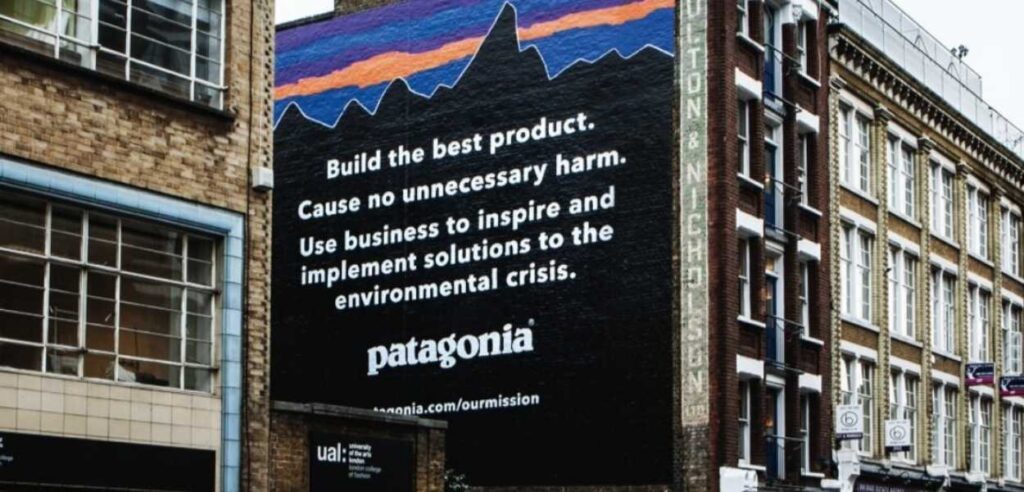
Investing in Data Analytics for Better Decision-Making
Data will continue to be the lifeblood of effective marketing strategies in 2025. Brands that harness the power of data analytics will be better equipped to make informed decisions, predict trends, and tailor their campaigns to meet customer expectations. The ability to access real-time insights and predictive analytics will set top performers apart from the competition.
However, with the rise of data privacy regulations, businesses must also be mindful of how they collect and use customer data. Ethical data practices will be critical in building trust with consumers who are increasingly concerned about privacy.
Actionable Step: Invest in advanced data analytics tools and teams to improve your ability to make data-driven decisions. Ensure your data collection processes are transparent and ethical, and prioritize data security to build consumer trust.
Refining Digital Transformation Strategies
Digital transformation isn’t a one-time event—it’s an ongoing process that must evolve alongside new technologies and customer behaviors. As we look toward 2025, businesses that remain agile and continue to refine their digital transformation strategies will be better positioned to succeed.
Mobile-first approaches, automation, and digital agility will be essential in delivering the seamless experiences customers expect. Brands that fail to evolve their digital capabilities risk falling behind competitors who embrace the latest innovations in digital marketing.
Actionable Step: Continuously assess your digital channels and invest in technologies that enable you to deliver personalized, mobile-first experiences. Stay on top of emerging trends and be prepared to pivot your digital strategies as needed.
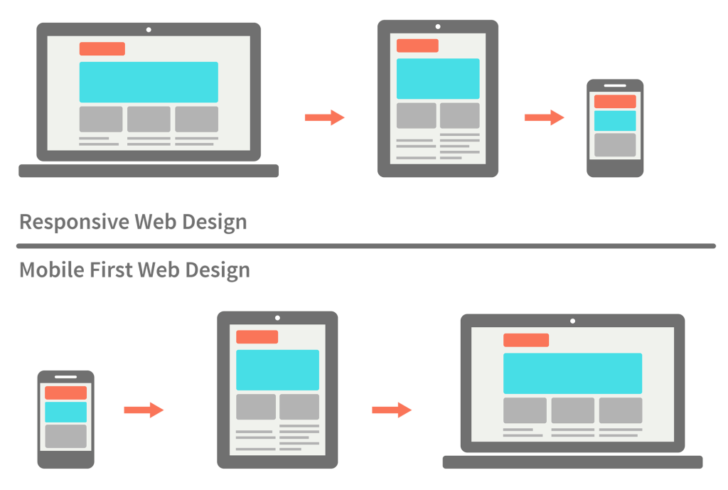
Embracing Ethical Marketing Practices
In 2025, consumers will increasingly favor brands that operate with transparency, inclusivity, and ethical values. Ethical marketing goes beyond avoiding misleading ads—it’s about building long-term trust through honesty, accountability, and a commitment to doing good.
Brands that embrace ethical marketing practices will resonate more deeply with today’s socially conscious consumers. This includes promoting diversity and inclusion, supporting social causes, and being transparent about business practices.
Actionable Step: Review your marketing practices and ensure they align with ethical standards. Be transparent about your brand’s values, and show genuine support for causes that matter to your audience. This will help build long-term loyalty and trust with your customers.
Agility and Innovation: The Cornerstones of Future Marketing
The future of marketing belongs to brands that can adapt quickly to change and foster a culture of innovation. Whether it’s responding to new consumer behaviors, pivoting during a crisis, or leveraging emerging technologies, agility will be key to staying competitive in 2025.
Agile marketing allows teams to iterate quickly, test new ideas, and respond to real-time feedback. Brands like Spotify and Nike have shown how an agile approach enables them to stay ahead of trends and maintain a strong connection with their audience.
Actionable Step: Build an agile marketing team by fostering a culture of experimentation and innovation. Encourage your team to test new ideas, iterate quickly, and adapt to changes in the marketplace.
Take the First Steps Toward Future-Proofing Your Marketing
As the marketing landscape continues to evolve, businesses that embrace AI-driven personalization, omnichannel experiences, sustainability, and ethical marketing will be well-positioned for success in 2025. But to stay competitive, brands must also remain agile and open to innovation.
Contact Bluetext today to start future-proofing your marketing strategies and ensure your brand is ready to thrive in the years to come.
In today’s fast-paced digital landscape, brands must continually evolve to stay relevant and competitive. One of the most transformative forces in modern branding is artificial intelligence (AI). From automating design processes to creating personalized visual experiences, AI is changing how brands are developed and perceived. But how do you leverage this cutting-edge technology to enhance your brand design while staying true to your core identity? In this post, we’ll explore how integrating AI into your brand design strategy can help you stay ahead of the curve.
The Importance of AI in Brand Design
Artificial intelligence has infiltrated almost every industry, and brand design is no exception. Traditional brand design workflows, which used to be time-intensive and reliant on human intuition, are now becoming more efficient and data-driven thanks to AI tools.
AI can assist in logo creation, generate brand color palettes, suggest fonts, and even layout entire webpages or advertisements in seconds. These tools allow businesses to produce consistent and aesthetically pleasing visuals more quickly and with fewer resources. But beyond speed and convenience, AI also introduces a level of precision and adaptability that wasn’t possible before, allowing brands to make informed, data-backed design decisions.
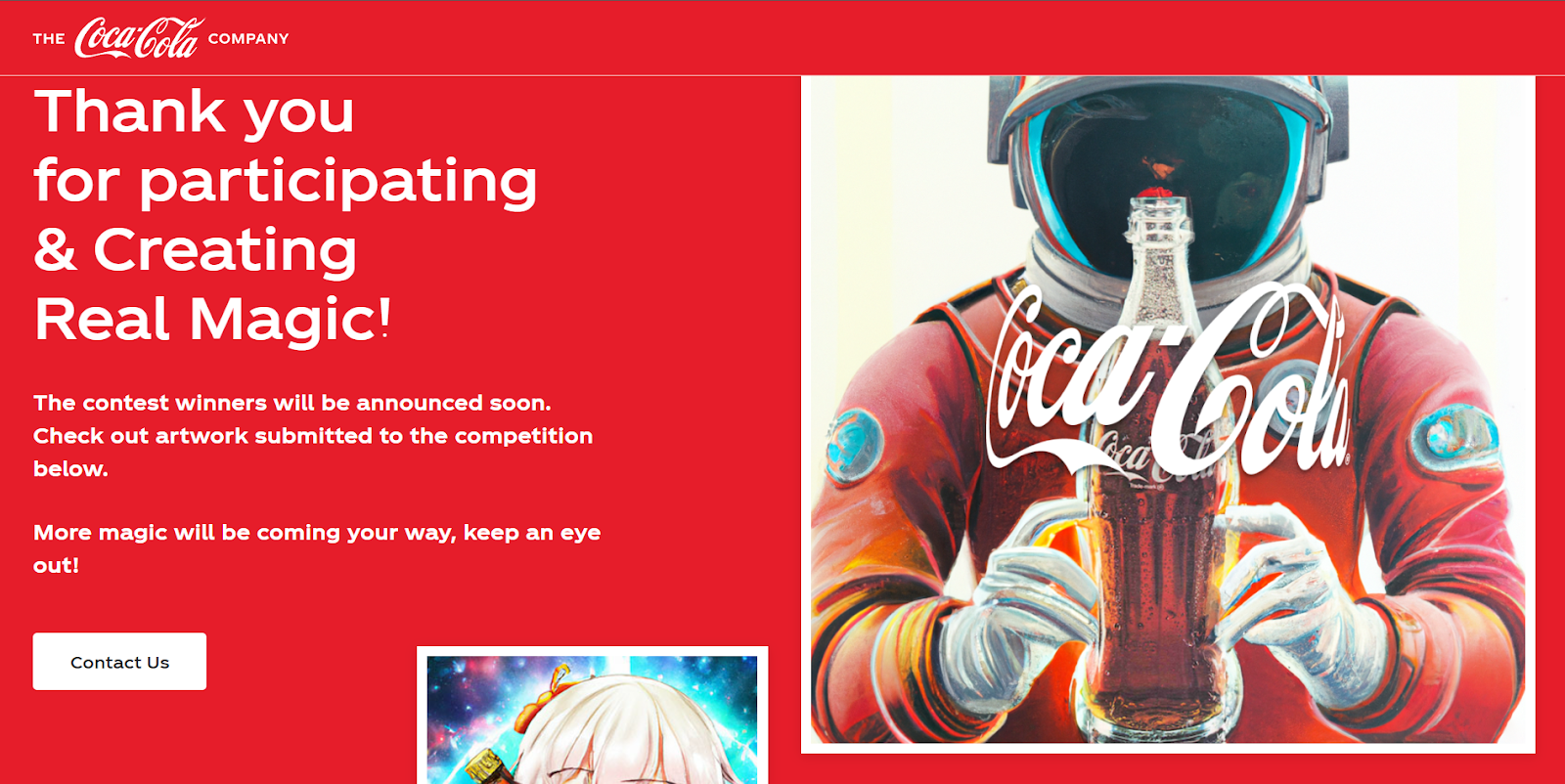
AI Tools Revolutionizing Brand Design
A host of AI-driven tools are already making waves in the design world, democratizing access to professional-level design. Tools like Adobe Firefly and Canva’s AI features enable both novice and professional designers to experiment with design elements like colors, typography, and layouts in real time. Looka, an AI logo design platform, allows users to create logos that fit their brand aesthetic in just a few clicks, using intelligent algorithms that adapt to user input.
These tools not only streamline processes but also give designers the creative freedom to focus on bigger-picture thinking while the AI handles the more repetitive aspects of design. Whether it’s generating mockups or automating the application of branding across multiple formats, AI tools are helping companies achieve consistent and impactful visual identities at scale.
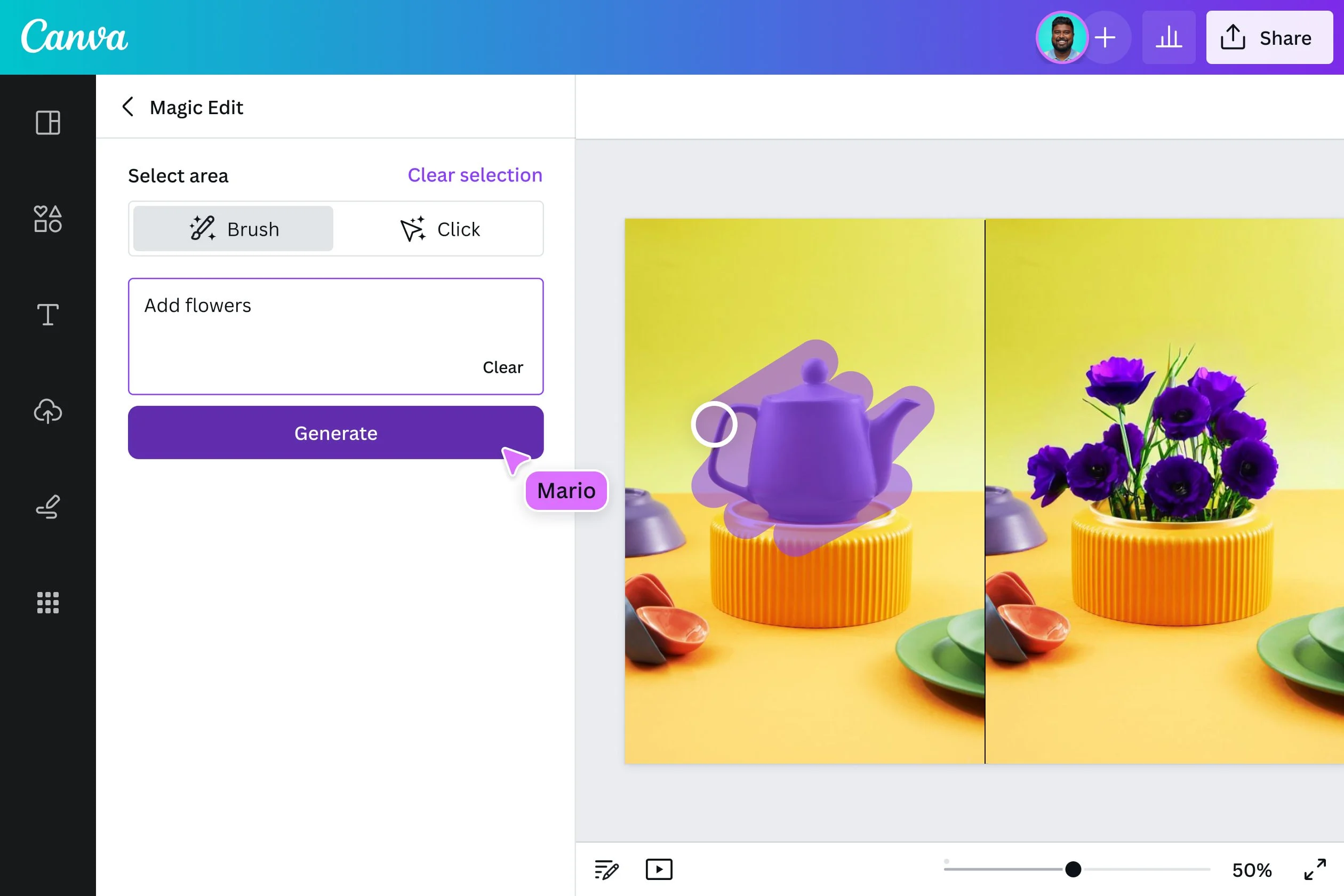
Personalization and Dynamic Design Through AI
One of AI’s most exciting applications in brand design is its ability to create personalized, dynamic visuals. By analyzing user data, AI can tailor brand experiences in real-time to better match individual preferences. This means brands can deploy personalized content, from custom website designs to targeted email visuals, based on user behavior and engagement patterns.
This level of personalization fosters a deeper connection between the brand and its audience, improving engagement and loyalty. For instance, AI can help e-commerce platforms generate product recommendations that are reflected in personalized brand designs, ensuring customers see visuals that resonate with their tastes and needs. This dynamic approach makes the brand feel more responsive, relevant, and customer-centric.
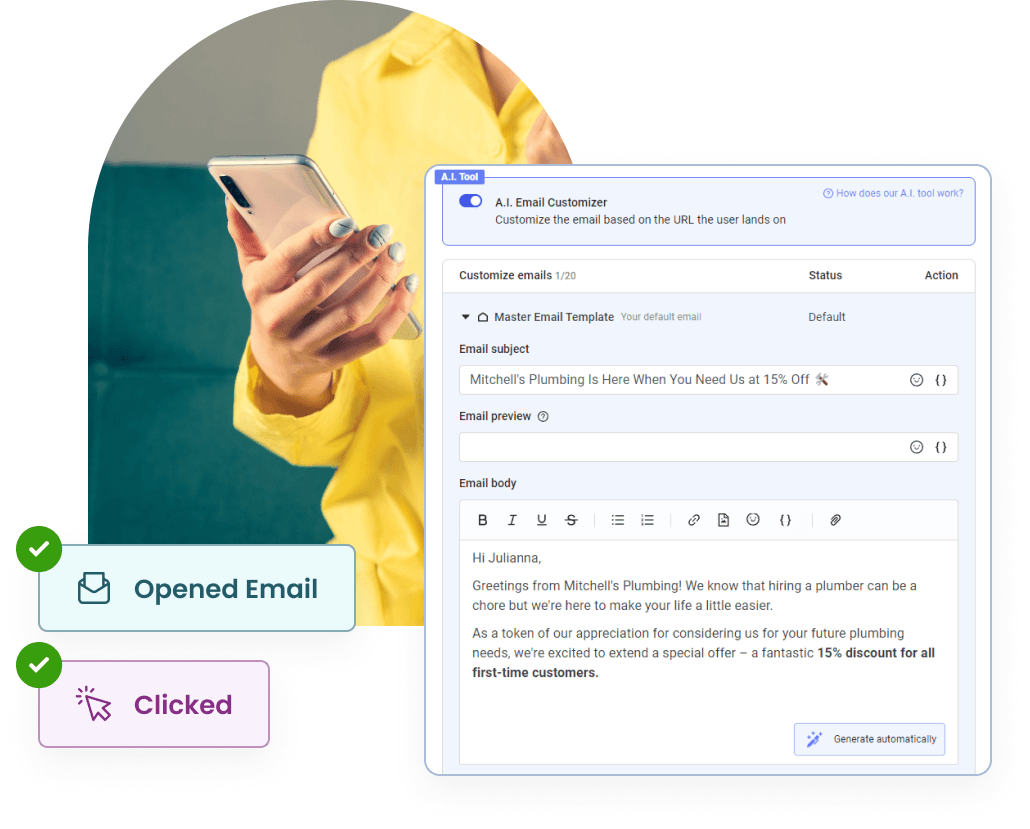
Maintaining Creativity and the Human Touch
While AI has proven itself to be a powerful tool in the designer’s toolkit, it’s important to remember that it’s not a replacement for human creativity. AI can enhance efficiency and produce data-backed designs, but the human touch is still crucial to infusing authenticity and emotion into your brand.
To maintain the balance, brands should view AI as a complement to human creativity, not a substitute. While AI can generate a polished logo in minutes, it takes a designer’s artistic vision to ensure that the logo communicates the right message and aligns with the brand’s ethos. Incorporating AI into your workflow should free up time for more strategic, creative thinking rather than completely automating the creative process.
How to Stay Ahead of the Curve
So, how can you stay ahead in this AI-driven design revolution? Here are a few practical tips:
- Start Small: Introduce AI tools incrementally into your design process. Use them to optimize repetitive tasks like resizing visuals or applying brand guidelines across platforms.
- Keep Learning: AI tools are evolving rapidly. Stay updated on new AI-powered design platforms and features to keep your workflow cutting-edge.
- Blend Creativity with AI: Don’t rely entirely on AI for design. Leverage its strengths in efficiency while maintaining human creativity to ensure your brand remains authentic and original.
- Experiment with Personalization: Use AI to create dynamic, personalized visual experiences that engage your audience. The more tailored your content is, the more effective it will be.
Conclusion
The integration of AI into brand design is not just a trend—it’s the future. AI offers unparalleled speed, precision, and customization that allow brands to innovate and compete on a global scale. However, the key to leveraging AI successfully lies in balancing its technological strengths with the creativity and emotional intelligence only humans can provide.
By embracing AI-driven tools and staying informed on the latest innovations, brands can maintain a competitive edge while still delivering designs that are authentic, personal, and aligned with their values. The future of brand design is a partnership between human creativity and AI’s efficiency—one that, when done right, will allow brands to thrive in the evolving digital landscape. Contact us today to explore how AI-powered design can elevate your brand to new heights!
As we stand on the brink of a new era in connectivity, 5G technology is set to revolutionize the digital landscape. For marketers, the advent of 5G presents a treasure trove of opportunities to engage audiences in ways previously thought impossible. At Bluetext, we’re excited to explore how faster connectivity can transform digital marketing, from enhanced mobile experiences to groundbreaking applications of augmented and virtual reality (AR/VR).
Faster Connectivity: The Backbone of Future Marketing
One of the most anticipated benefits of 5G is its unprecedented speed. With data transfer rates up to 100 times faster than 4G, 5G will significantly reduce latency and enhance the user experience. This improvement is crucial for digital marketing strategies that rely heavily on real-time data and instant communication.
Enhanced Mobile Experiences
Mobile devices are the primary touchpoints for consumers, and 5G is set to elevate this experience to new heights. Faster download and upload speeds mean richer, more interactive content can be delivered seamlessly. High-quality videos, interactive advertisements, and real-time customer service interactions will become standard, leading to higher engagement rates and improved customer satisfaction.
Additionally, 5G’s enhanced bandwidth capabilities will support a greater number of connected devices, facilitating more comprehensive and integrated marketing campaigns. Brands can leverage these capabilities to create more personalized and dynamic user experiences, ensuring they capture and retain their audience’s attention.
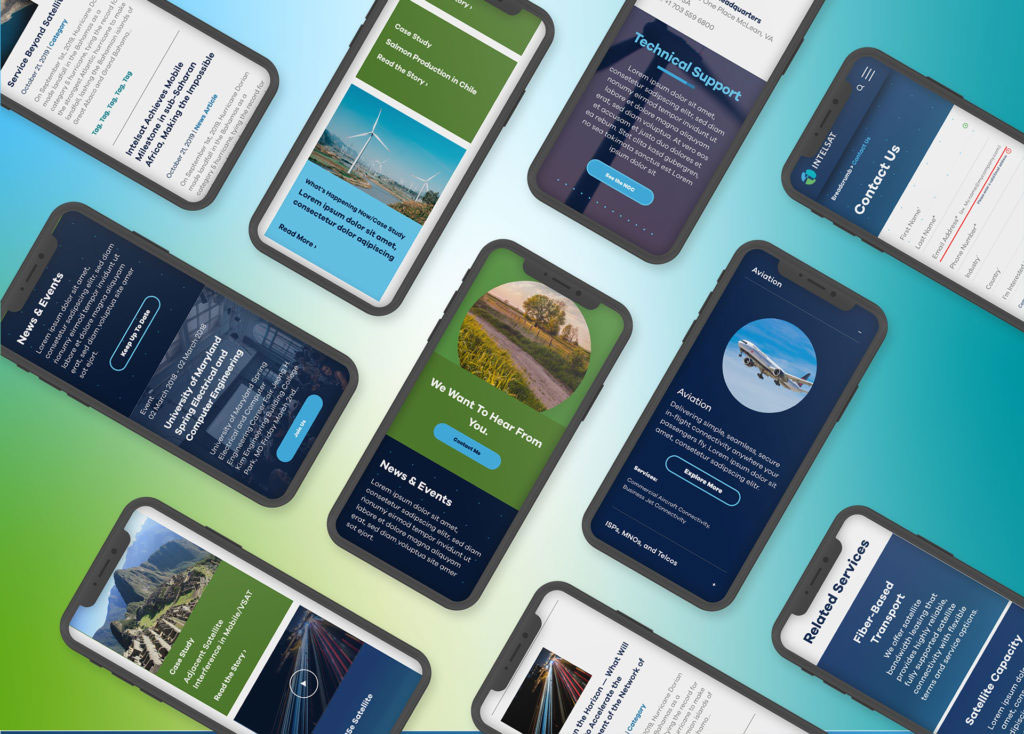
New Opportunities in Augmented and Virtual Reality
Perhaps the most exciting prospect of 5G is its potential to bring AR and VR into the mainstream. These technologies have been on the horizon for years, but the limitations of current networks have hindered their widespread adoption. 5G is set to change that by providing the necessary infrastructure to support the heavy data requirements of AR and VR applications.
Augmented Reality Marketing
AR offers marketers a unique way to engage consumers by overlaying digital information onto the physical world. With 5G, AR experiences will become more immersive and interactive. Imagine consumers being able to visualize how a piece of furniture would look in their home before making a purchase or trying on clothes virtually. These experiences not only enhance customer engagement but also reduce return rates and increase conversion rates.
Virtual Reality Marketing
VR takes immersion a step further by creating entirely new environments for consumers to explore. The high-speed, low-latency capabilities of 5G will make VR experiences more realistic and accessible. Brands can create virtual showrooms, host virtual events, or offer virtual tours, providing consumers with unique and memorable interactions that drive brand loyalty and sales.
5G Tips and Trends
To fully capitalize on the potential of 5G, here are some additional tips and trends to keep in mind:
1. Embrace Video Content
With faster speeds and better connectivity, video content will become even more prevalent. Invest in high-quality video production and consider incorporating live streaming into your marketing strategy. Live Q&A sessions, product launches, and behind-the-scenes content can significantly boost engagement.
2. Focus on Personalization
5G’s ability to handle large amounts of data quickly means more opportunities for personalization. Use data analytics to create highly targeted marketing campaigns that cater to individual preferences and behaviors. Personalized content is more likely to resonate with your audience and drive conversions.
3. Optimize for Mobile
As mobile usage continues to grow, optimizing your website and marketing materials for mobile devices is essential. Ensure that your content loads quickly and is easy to navigate on smartphones and tablets. A seamless mobile experience can greatly enhance user satisfaction and retention.
4. Leverage IoT (Internet of Things)
The increased connectivity of 5G will accelerate the growth of IoT devices. Marketers can use IoT data to gain deeper insights into consumer behavior and preferences. For example, smart home devices can provide valuable data on user habits, enabling more effective targeting and personalization.
5. Stay Ahead with AI and Machine Learning
The combination of 5G and AI will open new doors for predictive analytics and real-time decision-making. Use AI-powered tools to analyze data, predict trends, and optimize your marketing efforts. Automated chatbots, personalized recommendations, and dynamic content are just a few examples of how AI can enhance your 5G-enabled marketing strategy.
Embracing the 5G Future
The advent of 5G is more than just an upgrade in connectivity; it’s a paradigm shift that will redefine digital marketing. At Bluetext, we are excited to help our clients navigate this new landscape, leveraging the power of 5G to create innovative and effective marketing strategies. From enhanced mobile experiences to the groundbreaking use of AR and VR, the possibilities are endless. As 5G continues to roll out, the future of digital marketing looks incredibly promising, and we’re thrilled to be at the forefront of this revolution. Contact us to learn more.
2023, wow, what a year! From Hollywood strikes to a new king of England, 2023 brought a treasure trove of pop culture moments and social movements that captured the world’s attention. But even amidst billion-dollar Taylor Swift tours and the cult of Pedro Pascal, one topic of discussion has dominated nearly every narrative. AI.
Unless you’ve lived under a rock for the past year, you’ve probably used or at least heard of generative AI tools. Actually, even the boulder dwellers among us have probably had ChatGPT write an email reply by now.
AI is everywhere, and that goes doubly so for the marketing world, with digital content marketing being the area with the most pronounced impact. So, get your reply prompts ready as we discuss how AI transformed the content marketing landscape in 2023.
Can AI Tools Keep Pace With the Trade?
2023 saw an explosive expansion of tools for writing blogs, drafting social media posts, designing graphics, and more, all through the power of AI. What usually takes content marketers hours to accomplish can seemingly be condensed into a matter of minutes. But, this raises the question of whether AI-generated content can provide the same value to marketers as work created by human writers and designers. The answer, as it turns out, isn’t so clear.

Finding the Art in Artificial Intelligence
Proponents of marketing AI tools are quick to cite their ability to increase productivity, support more consistent content schedules, and reduce creative resource use. It’s hard to argue that having content ready at the push of a button won’t improve your productivity and bring more potential strategies within reach.
On the other hand, AI skeptics focus heavily on the middling quality of work AI tools can produce. Many writers complain about a lack of creativity and personality in AI writing, which lessens reader engagement and leads to higher bounce rates from blogs and social pages.
Search Algorithms Side with Quality Over Quantity
While it remains to be seen whether AI generators can close the gap between man-made content and their own, it’s important to note that quality is already a major consideration for SEO purposes.
Google and large social media sites like TikTok emphasized their algorithms will prioritize high-quality content, AI-generated or not, over all else. So before you try gaming the system with a flood of keyword-littered AI essays, consider if your best bet actually to be seen is taking time to perfect one post.
Leading Brands Leverage AI Across the Enterprise, Will Yours?
Whether your business works with AI or not, it’s undoubtedly the hot new capability every marketing company wants to tout for themselves. 2023 saw marketing industry behemoths like HubSpot and Salesforce go all in on AI with new features and products featuring the technology added to their user platforms. Even advertising platforms like Meta’s Facebook and Instagram have integrated generative AI tools to assist marketers in leveraging the technology for targeted content creation.
As AI continues to evolve and expand in 2024, so will the possibilities for more curated content creation and deeper customer engagement. Whether its role will be augmenting content marketing or transforming media creation as a whole remains to be seen.
One trend we are confident will remain steady, and even grow in significance, is the focus on content development within B2B marketing roadmaps. Especially in a new era where previous boundaries around writing resources and bandwidth have been leveled by technology, companies are enabled to efficiently produce content at scale. Whether or not that content is right theme or voice for their audience, that’s a different story. That’s where an agency partner can come in handy to ensure any AI tools and new technology are working for you, not against you.
Curious where a stronger content strategy could take your business in the new year? Contact Bluetext to learn more about messaging, positioning, content marketing and more.
Ever wish you had a magic tool to help communicate trends, patterns, and insights based on complex data sets? Luckily, that tool exists, and it’s something you’ve already seen and used in its most simplistic form – data visualization. It’s believed that around 65% of people are visual learners, so it’s not surprising that data visualization tools are so effective and widely used in many industries.
Data visualization can be simple or complex, ranging from simple charts, graphics, and maps, to more complicated visual representations. These tools analyze complex data sets, identify patterns, extract valuable insights, and present it in a visual format that’s easy to digest and make informed decisions from. Take a look at this very simple example from Tableau using a word cloud chart to emphasize the frequency (and thus importance) of a set of words. The more important or frequently used a word is, the larger and brighter it appears.
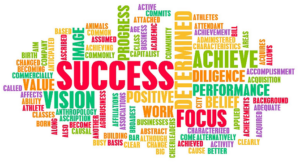
This data visualization example is rudimentary but effective. Advanced data visualization is more than just converting data into charts and graphical formats. It’s part of a company’s BI (business intelligence) strategy that generates new insights and helps communicate them more effectively, making for easier understanding, collaboration, and decision-making. And with the overconsumption of content in today’s world, who doesn’t want help making well-informed, smart decisions?
The value of data visualization is clear, but how do you know which type of data visualization is right for your need? Especially with AI entering the chat, there are several types of data visualizations to consider. Here are 5 data visualization types that you should know about.
1. Interactive Visualizations
People have been using static data visualizations like charts and maps for centuries, but what makes data visualization more useful is the ability to manipulate it. Interactive data visualization allows users to interact with the data directly within the visualization itself to explore and better understand it. The ability to interact with the data has a number of benefits compared to traditional static data visualizations. It provides a more immersive experience that lets users feel empowered to explore the data in more depth. It also helps uncover insights like patterns and trends that might not have been obvious in a static format. All of this leads to better data-driven decisions.
2. Collaborative Analytics & Visualizations
We can’t talk about collaborative data visualization, sometimes known as social business intelligence, without discussing analytics. Analytics plays a huge role in business operations, but understanding all the different data points can be a complicated and overwhelming venture. Using business intelligence (BI) software, organizations can collaborate on shared goals faster and be better aligned cross-functionally. The key to this is embedded analytics. Traditional BI systems rely on data stored on an internal database, but embedded analytics integrates BI tools and functionality into business applications which gives users access to data and insights directly within your applications (such as websites, apps, CRM, etc.). The convenience and accessibility of these insights allow for even more collaboration and faster decision-making between teams. Some of the most popular BI tools on the market today include Microsoft’s Power BI, Tableau, Qlikview, and Domo.
3. VR and AR Visualizations
You haven’t splurged $16k on family movie night using Apple’s Vision Pro VR/AR headset? Neither have we. But we have learned how AR and VR can create more immersive data visualization experiences by enabling users to engage with data in three-dimensional spaces. Users can see the various layers of datasets with additional context that spreadsheets or traditional visualizations can’t convey. A larger density of data can be shown at once, which allows for much faster cognitive processing compared to 2D visualizations. This new “immersive analytics” field will help data scientists tell better stories by breaking down the complexity of the data, offering more involvement and understanding in data analytics to everyone, not just data professionals.
4. Real-Time Data Visualizations
We’re constantly seeking the most up-to-date information and sources, so it makes sense that the most relevant data visualizations would be in real-time. Real-time data visualization allows you to monitor and analyze data as it’s generated, enabling users to make fast, informed, data-driven decisions. In addition to better, more confident decision-making, another huge benefit is improved accuracy and productivity. Real-time insights can help identify anomalies or errors as they occur, enhancing the reliability of the data. Typically, real-time data may involve working with sensitive or personal information, so it’s important to ensure that data security and privacy are accounted for. As more and more data continues to generate in real-time, the demand for real-time insights will grow.
5. AI-Powered Visualizations
At its core, artificial intelligence is the simulation of human intelligence processes though machines, and it has changed the way we problem solve. We could speak to the various definitions of AI, the different types, the implications, applications, and considerations, the ethical delimas, and more all day, (and probably lose some sleep over-thinking it). But right now we’re focused on AI’s impact on data visualization.
Traditional data visualization uses algorithms to create charts and graphs from data, whereas AI-driven visualization uses algorithms that can learn, understand, and respond to the data, potentially even better than a human can. AI-driven data visualization has several key benefits that the previous types of data visualizations don’t (at least not to the same extent). Automating repetitive tasks producing meaningful information is one of those. AI-powered data analytics can streamline your workflow and automatically generate personalized charts and graphs that easily communicate complicated information and insights. This saves time and resources, and combining the AI insights with human SMEs makes for better, well-informed decisions and smarter AI model builds that continue to improve as it learns more.
All of these data visualization types have the same common goal – to empower users to make faster and more confident data-based decisions. (See Bluetext’s blog on using data to create powerful PR narratives). With the rapid growth in AI, big data, data science, and machine learning, the importance of data and data visualizations for understanding and interpreting complex information will continue to surge.
What’s the latest in AI tools? After months of new software making significant waves in the creative industry, Adobe has finally launched its own AI image generator. While still in the beta stages of development, the debut of Adobe’s Firefly & Generative AI marks a significant enhancement to the creative suite already in use by millions. So rather than paying for and downloading additional products, such as DALL-E or MidJourney, designers now have the tools of AI at their fingertips within Photoshop, Illustrator & Premiere applications.
Much like other AI tools on the market, Adobe’s product allows users to type in a prompt and have an image created in return. But one critical difference is Adobe is one of the few companies willing to discuss what data its models are trained on, and eliminates the controversial copyright concerns. According to Adobe, every asset being fed into its models is either out of copyright, licensed for training, or in the Adobe Stock library, which the company has the right to use. This gives Adobe’s product an additional leg up in the AI race as there is no risk of copyright or trademark infringement which has been creating much controversy amongst the design community. VP of Generative AI & Sensei, Alexandru Costin, claims, “We can generate high-quality content and not random brands’ and others’ IP because our model has never seen that brand content or trademark.”
So is it worth the hype? Bluetext’s designers took a tour of the beta program to test its capabilities and pressure test some potential applications. Our main takeaways? Well, like any AI tool on the market, there are obvious advantages, but still notable weaknesses proving AI technology is indeed a work in progress and never a full replacement for human abilities.
Let’s explore some of Bluetext’s experiments with Generative AI.
One of the most impressive feats of Adobe’s generative fill is the ability to enhance imagery with additional subjects. So what had previously taken creative hours to clone, align, fill, and blend imagery. But now, AI tools can accelerate that process by enabling a designer to select an area, type in a prompt, and receive three results to select from. For example, we took this photo of simple but scenic mountains.

We asked Adobe AI for a series of additions, including more mountains, a cliffside mansion, and even a goat.



Overall we were extremely impressed with the tool’s ability to blend new creative into the previous scene, as the new mountains and mansions were almost a seamless match to the focus, lighting, and textures of the original scene. While not all of the generated options were a great fit for our requested prompt, the majority of outputs fit the requested prompt pretty spot-on.
So with that experiment’s success, we decided to pressure test some more difficult subject matter. One of the core obstacles to AI-generated imagery tools is the inability to produce realistic and believable human subjects. AI tools often have what is called the “uncanny valley” effect. This phenomenon refers to the natural emotional response of eerie or unsettling feelings that people experience in response to not-quite-human. The majority of people have an aversion to the imagery that is meant to appear human but with some caveat of disproportion or unrealism. This phenomenon occurs often with computer-generated imagery that technically appears human, or humanoid, but has a “can’t put my finger on it” inconsistency that appears robotic or unnatural. After the prompt in Adobe AI to generative fill in “a man/family eating ice cream” into the amusement park scene below it confirmed our hesitancies.
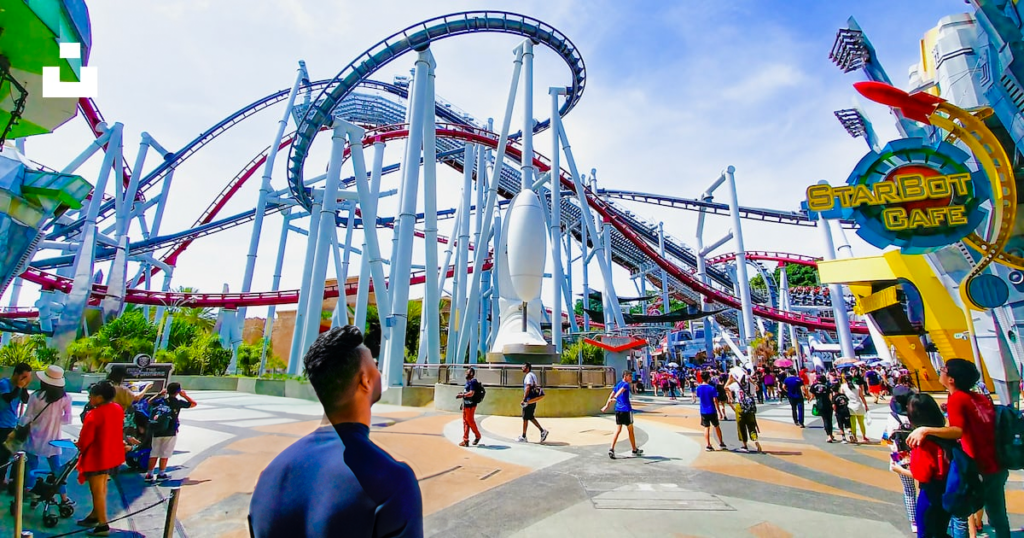
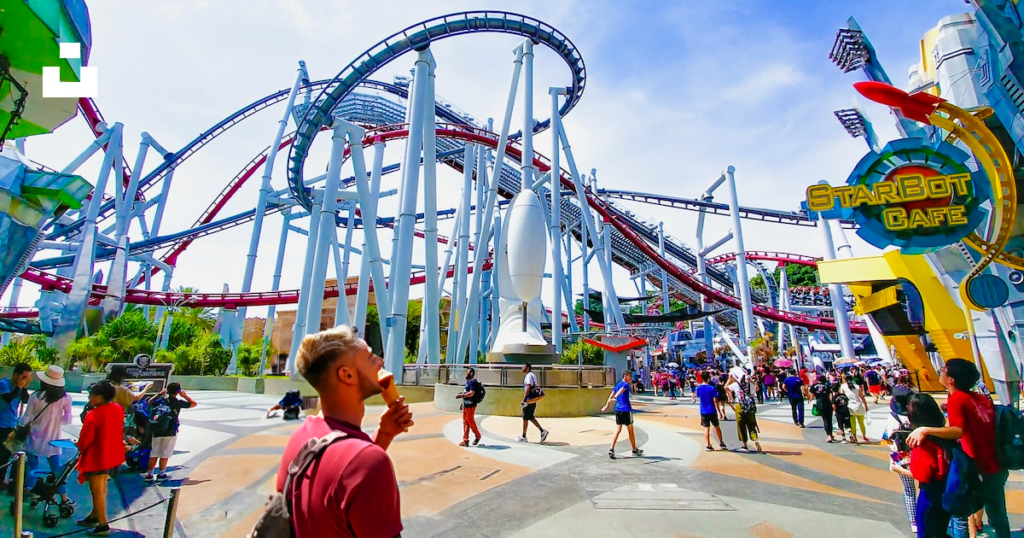
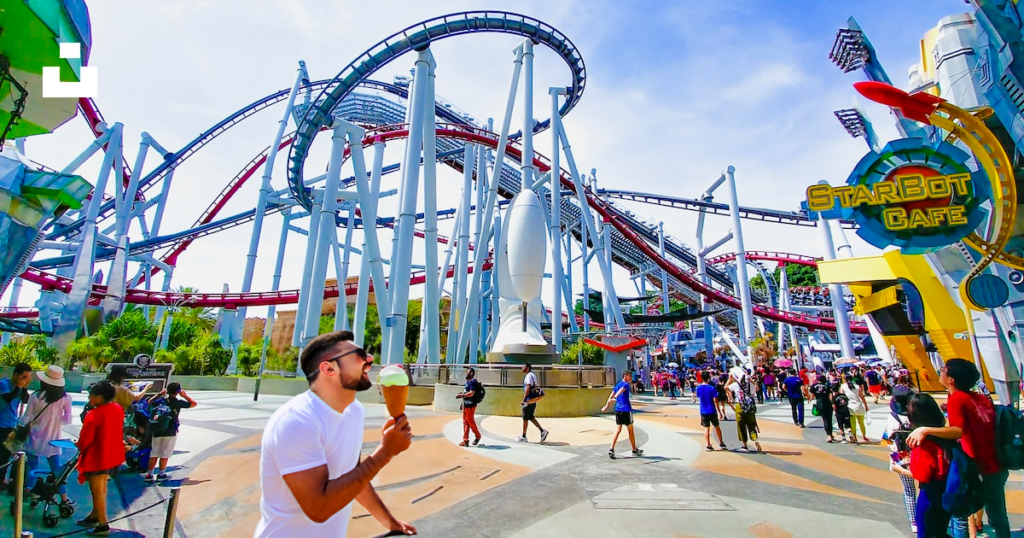
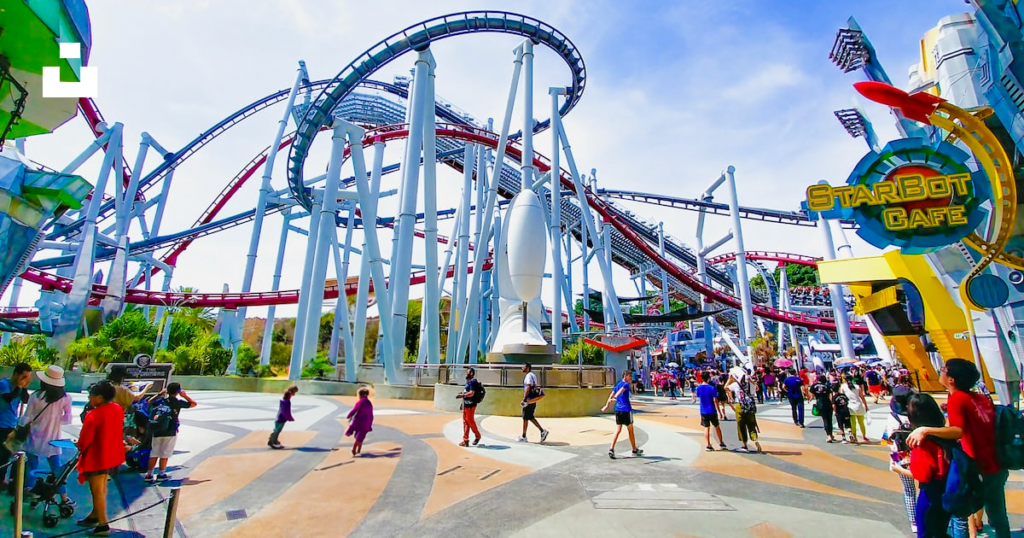
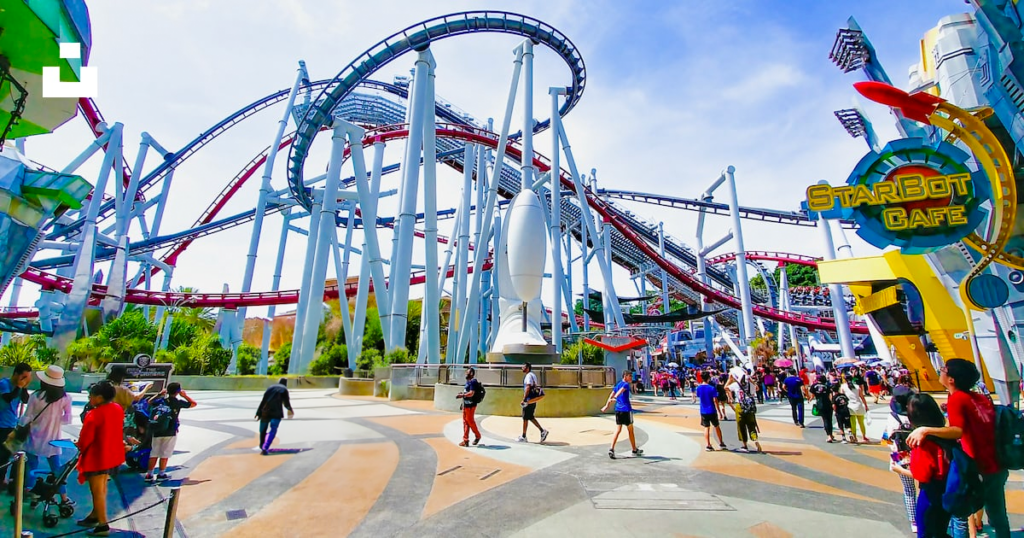
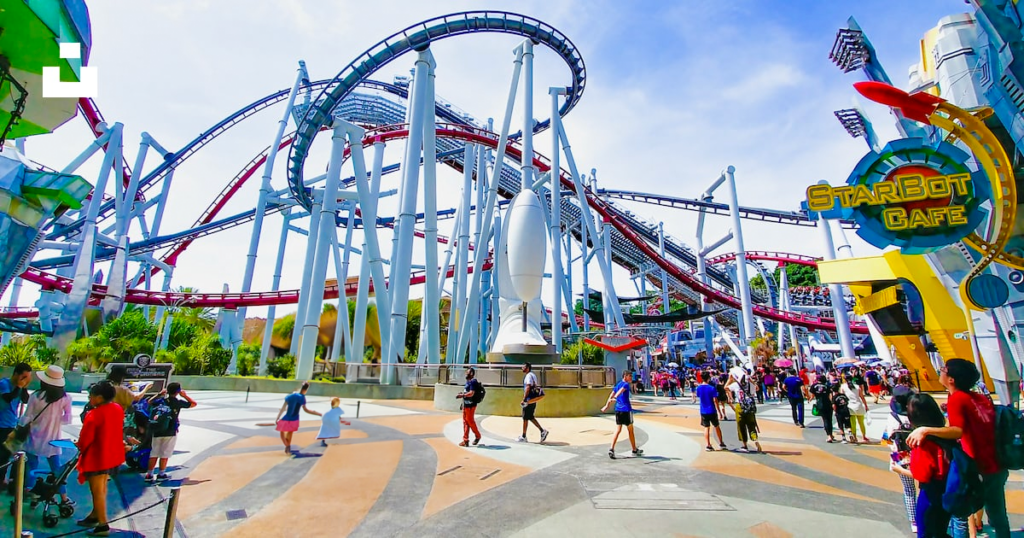
The generated responses yielded a mix of graphic styles, resulting in distorted human photography and clip-art-esque illustrations. Facial features and phalanges were expectedly distorted, as these are the features that are most difficult to create hyper-realistic depictions.
While adding people to the scene created challenges, we found removing people was very realistic. The removal of foreground elements is a significant strength in Adobe’s tool, as it cuts out significant time to remove elements from a scene and recreate backgrounds. Our result generated a perfect match to the park’s backgrounds in a matter of seconds, with impressive accuracy and attention to detail that would have taken any designer hours to complete.
Another powerful potential application of generative fill is the resizing of imagery for specific proportions. For example, say you found a great image you want to use as a website hero zone background. The only problem is this selected image is portrait orientation, making it incredibly difficult to adapt to wider landscape or even square formats. Adobe’s generative fill allows the user to select specific areas, and generate that exact texture, background, or graphic elements across a new canvas size. Especially for abstract and texture-based imagery, this seamlessly recreates the design to fill negative space. The previously limited portrait image is now croppable and has more flexibility to be scaled to various formats for websites, display ads, social platforms, and more.


Overall, our stance on AI-generated design tools remains the same. There are undeniable advantages to accelerating tedious tasks and supporting ideation phases, however, still require a significant amount of human attention and editing. AI tools are not, and likely will not, ever be a full replacement for human talent and still face severe limitations in creating certain subjects like human faces or fingers. AI tools are much more adept at scenery, abstract subjects & textures and when used correctly can be a powerful addition to your creative team.
Interested in AI tools? check out our Midjourney case study and how generative AI can enhance ideation.
With all the buzz on AI-generated copy and design tools, we’re all wondering the same unspoken question: Can Google detect AI tools? Is this…allowed? Or looked down upon? With more and more companies beginning to leverage AI-powered tools for their marketing needs we are all wondering whether speed and efficiency may come at the cost of SERP rankings.
The answers to these questions are muddled, but here’s what we do know: Google itself relies on advanced algorithms and machine learning to detect and evaluate the quality of website content. The entire purpose of search engines is to provide users with the most relevant and useful content possible, hence our society has become so search engine dependent on everything from research to daily needs. Google algorithms are designed to identify and flag low-quality or spammy content.
Google’s spam policy stance defines “Spammy automatically generated (or “auto-generated”) content as content that’s been generated programmatically without producing anything original or adding sufficient value; instead, it’s been generated for the primary purpose of manipulating search rankings and not helping users.”
Historically, auto-generated content generated by machine learning scrips has had a reputation of being lower quality and overstuffed with keywords aimed at manipulating Google’s search results. This has led Google initiatives to detect this type of content and remove it from the SERPs in an attempt to preserve the integrity of its search results for the end user.
Google Search Central has stated that “scraping content, even with some modification, is against our spam policy.” As well as confirming that Google has put implemented, “…many algorithms to go after such behaviors and demote site scraping content from other sites.”
Prioritizing high-quality, human-generated content on Google results provides a better search experience for users and maintains their credibility. But with the rise of the new AI tools that promise more natural and higher quality outputs, marketers and writers have the opportunity to utilize these tools to generate higher quality, more helpful content for the users rather than an endless amount of spam content. Quality over quantity has become the universal goal for AI generators and users.
Therefore, the content generated by GPT-3 and other AI language models like ChatGPT, is at risk of being detected as machine-generated and flagged by Google’s algorithms. Like recognizes like, so there’s a good chance that machine learning algorithms will recognize similar machine learning. As far as technology has come, it will never be a complete substitute for human intellect. The writing style, grammar, and sentence structure of AI-generated content are often not as natural or accurate as human-generated content.
Editing has become the name of the AI game. It’s important to make sure that any content generated by AI models like ChatGPT is carefully reviewed and edited by a real person before being published on your website. This helps ensure that it meets Google’s quality standards and policies, and accurately reflects the subject. If you are choosing to leverage AI tools on your website it’s important to make sure that your website is balanced with plenty of original and unique content, so that it complies with Google’s policies in terms of user experience, design, and navigability.
Whether or not search engine consequences currently exist for websites leveraging AI-generated content has not been confirmed, nor denied by Google. For any company seeking to rank high in search engine results, it’s better to be safe than sorry and maintain a close human eye on your SEO strategy, from content to keyword selection. Contact Bluetext for more information on our expert search engine optimization services.
In a time of economic uncertainty, it’s more important than ever to stay ahead of the curve as well as the competition. Stale digital marketing strategies simply won’t make the cut. Here at Bluetext, we’re committed to providing our clients with the latest and greatest when it comes to up-and-coming marketing strategies and trends. In this blog, we’ll look at five key predictions to bolster your marketing strategy in 2023.
Content Marketing in 2023
Gone are the days of strict, professional content and messaging for companies. In 2023, consumers are looking for you to empathize with them, breaking down the traditional walls that separated corporate from compassion. Lean into emotive content filled with transparency, empathy, and relatability. Your customers want to know they can trust you, especially in times of economic uncertainty when every penny counts. Ditch the sales-based pitch in your content and speak to your customers as if they were your friends.
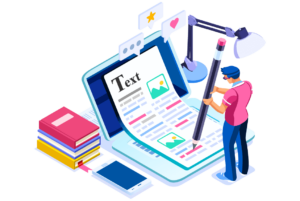
Short-Form Video
In today’s culture, TikTok is all the rage. The average user now watches 19 hours of video content every week, and a lot of that is happening on their mobile devices, accounting for 80% of all mobile data traffic. In other words, short-form video is huge and should be taken seriously by companies heading into 2023.
Producing content specifically for TikTok, Instagram Reels, and YouTube Shorts also lends itself well to companies, as shorter content takes less time and effort to produce. Additionally, viewers are more likely to engage with a shorter video that gets straight to the point versus a video they have to sit through for 30 minutes.
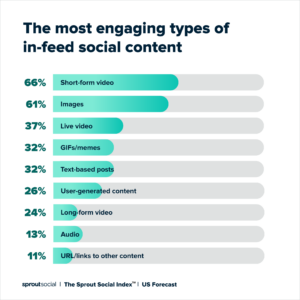
Augmented Reality
Using AR in marketing campaigns was certainly on the rise in 2022 and will continue to grow in both capabilities and use as we get into 2023 and beyond, with the global AR market expected to reach $28 billion by 2028. While AR may seem to be only available to large companies with large marketing budgets like Ikea, there are opportunities for smaller companies to lean into the augmented reality trend. Even something as simple as adding augmented reality functionality to your business card could be a great way to set yourself apart from the competition. You could add buttons to text or call, include a pop-up video showing off your product, and more.

Artificial Intelligence
Although the technology behind artificial intelligence is still maturing and a sound business case is still being developed, that doesn’t mean you’re not able to jump ahead of the curve. It is predicted in 2023 that the science behind marketing data analysis will benefit greatly through AI with tools such as TensorFlow and Gretel, allowing your company to glean more information from your data than ever before and drive higher profitability.
The power of conversational AI will also continue to grow (looking at you, Chat GPT) on the back of terabytes of data, enhancing your ability to actively engage with your customers on a personalized level. Tools like Campfire and Kore are making it easier for businesses to take advantage of the power of artificial intelligence with their platform-based solutions.
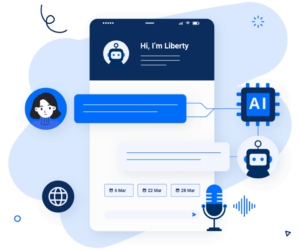
Metaverse
The metaverse was certainly a trending topic throughout 2022 and will continue to make headlines into 2023 and the future. According to a recent study, 59% of consumers are excited about transitioning everyday activities to the metaverse, with a similar number of metaverse-aware companies (57%) already adopting the concept. In 2022, we saw a variety of events being hosted in the metaverse, a trend that will continue into next year via virtual tradeshows, customer experiences, and facility tours. We’ll also see an increase in metaverse use for internal business processes such as employee onboarding, training, and even company happy hours.
Advertising in the metaverse will also continue to rise in popularity as the metaverse itself continues to grow. In order to align with the metaverse ethos, ads will need to be immersive and complement the user experience, allowing advertisements to become part of the gameplay and establish meaningful engagement with users.

You may already be aware of these upcoming trends and the implications they could have for your business but unsure of how to start addressing them. Bluetext has the expertise and industry experience to help you grow your brand and implement effective changes to your marketing strategy. To learn more about our offerings, contact us today.
No matter what industry your company is in, or who your target market is, the goal of any customer interaction is to foster a relationship that converts to revenue. In today’s digital landscape, customers’ expectations have elevated to instant yet personalized feedback to their questions at the click of a button. While this seems like an impossibly daunting task, it has become an expected digital experience with the help of technology. Artificial intelligence-powered live chat, chatbots, and messaging apps have all helped companies achieve this blend of efficiency and customization. Below, we dive deep into the power of conversational marketing and how to implement the right strategy for your business.
What is Conversational Marketing?
In its essence, conversational marketing is a series of one-to-one interactions in real-time across multiple channels. Conversational marketing enables you and your team to foster relationships with both potential customers and existing customers, improving overall online customer experience and brand perception. A successful conversational marketing strategy ensures your customers feel satisfied and supported in all their questions, and trust your brand throughout every stage of the sales funnel. Additionally, as we know, data is a powerful tool, and utilizing conversational marketing technology can increase that amount of data allowing you to tweak your strategy and increase conversions. Every conversation could be considered a mini focus study and learning experience for how to continually improve your business.
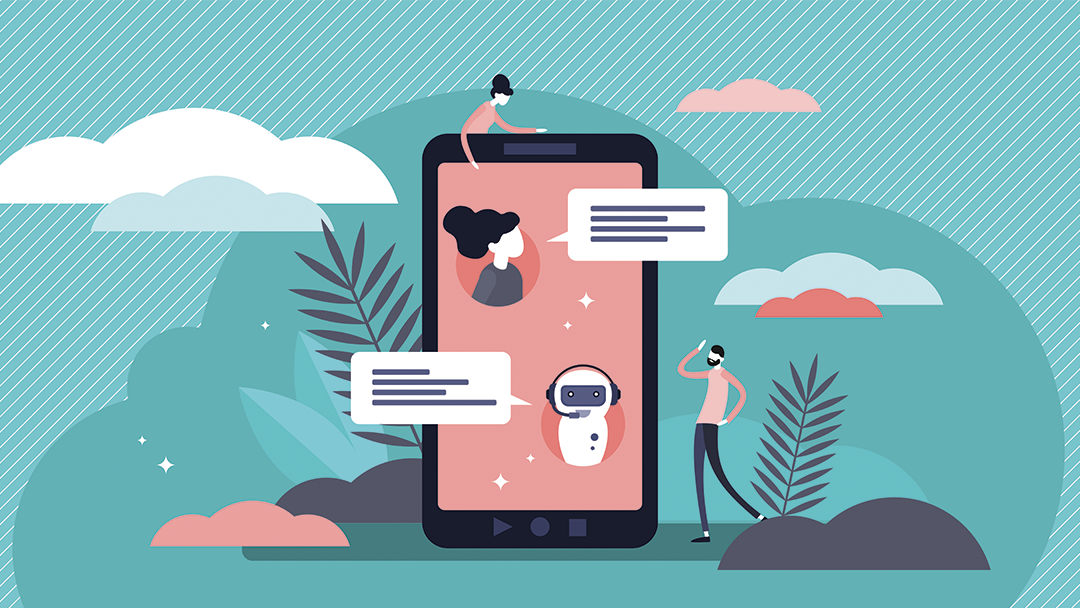
Chatbots
As your business scales up, so will the number of questions from prospective and existing customers. That being said, there will come a time when it is simply not feasible to increase the number of sales representatives you have to answer every question that comes in via your website. That’s where chatbots come in. Chatbots have become the go-to conversational marketing tool for a lot of businesses. Platforms like Drift, which integrate seamlessly with your existing website make chatbots a very easy and effective way to up your conversational marketing efforts. Chatbots are very effective when it comes to easing customer pain points quickly and provides a visual cue of reassurance upon landing on a web page that support resources are readily available. Pre-programmed answers to frequently answered questions allow you to talk to your customers, regardless of the time of day. This is especially beneficial for businesses with an international reach, as customers outside your local time zone will always feel supported. If the query is too unique to respond with a canned response, chatbots can connect the customer with a live representative who can better answer their questions. Plenty of conversational marketing platforms enable businesses to identify which leads are most likely to buy and then move them to the front of the line.
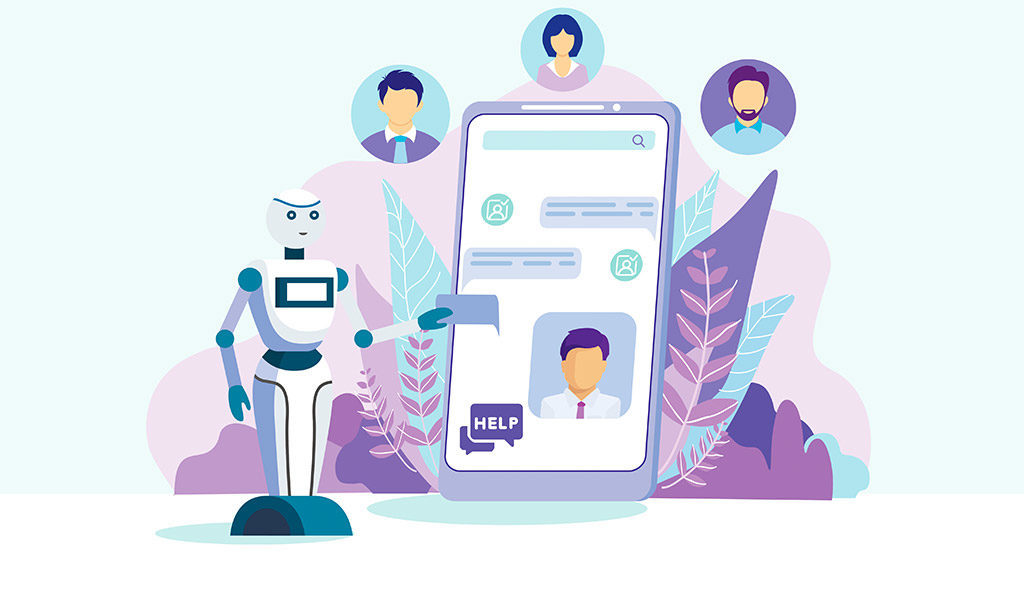
Customer Feedback
Pulling data from your chosen conversational marketing tool on customer engagement will only get you so far. At the end of the day, you’ll need to gather feedback from your customers, asking them their thoughts on how to improve the customer and prospect experience on your site. This will not just enable the customer to feel that they have a say but also will help in the optimization of the tools after some time. Adding a quick feedback survey to the end of a chatbot or live chat conversation will go a long way in improving customer satisfaction.

How to Get Started
Implementing a successful conversational marketing strategy starts by choosing the web pages where you want your conversational bot to engage with your visitors. Sometimes it makes sense to have a constant chatbot available on every page, at all times. Other times, and especially when utilizing live chat versus a chatbot, it pays off to choose the pages that get the most traffic, have the most conversion opportunities, or have visitors with a high intention of buying. This will help maximize the number of interactions you enter into, and the likelihood of success of those interactions. Now that you’ve decided where you want to speak to your customers on your website, it’s time to define what kind of information customers will ask for, and how in the simplest terms you can provide them with that information. As a general rule of thumb, try to keep the conversations simple. Your customers will expect the interaction with your company to be smooth and want to get answers and guidance quickly.
Regardless of the size of your company, having a conversational marketing strategy is key to increasing customer satisfaction and therefore revenue. Are you looking to begin your conversational marketing strategy but not quite sure where to start? Contact Bluetext and see how we can help.